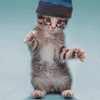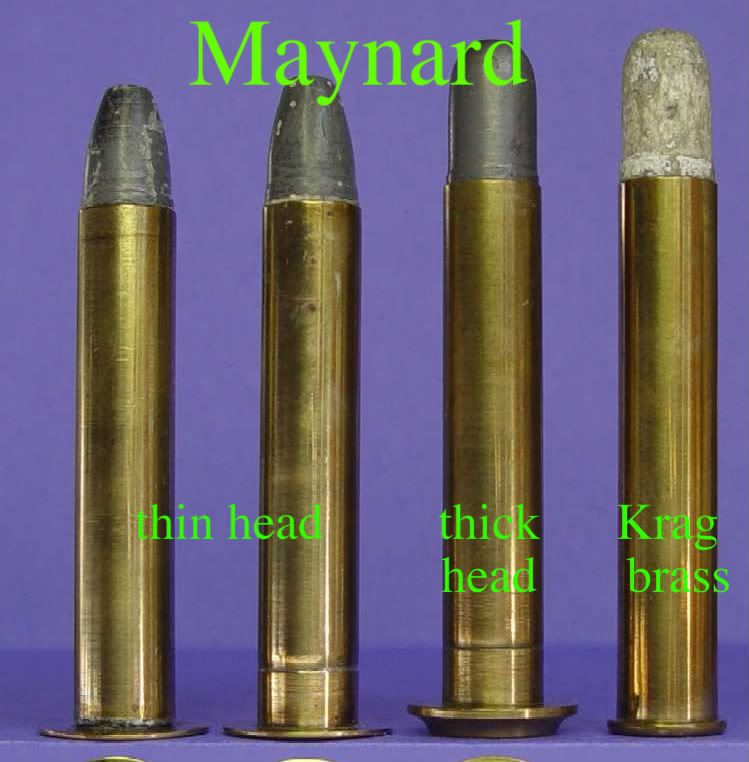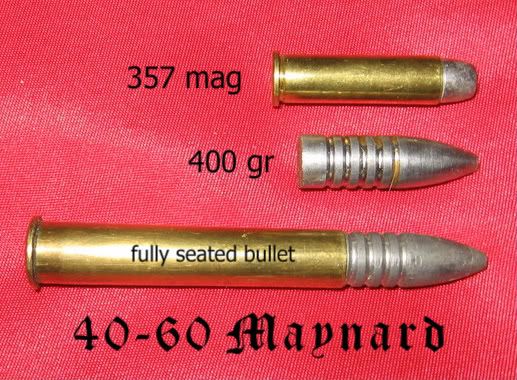http://www.cfspress.com/sharpshooters/arms.html
http://www.rootsweb.ancestry.com/~orpha ... ooters.htm

THE KENTUCKY SHARPSHOOTERS
Elite Corps of the Orphan Brigade
Geoffrey R. Walden
... The scene is the Confederate line along Kennesaw Mountain, during the Atlanta Campaign of 1864. The puff of smoke from the Federal artillery position a half mile across the valley, followed by the report of the cannon and the scream of the shell passing overhead, signaled the beginning of another day. "You get a range on it, Taylor?" asked a well-concealed Southerner. Hurriedly adjusting the brass pocket stadium (a primitive rangefinder), his companion replied, "Set your sights at 800 and aim at the opening."
A flurry of activity at the gun embrasure in the enemy's fortifications, the result of sponging and ramming the muzzle-loading cannon, provided a convenient target, and the sharpshooters fired almost simultaneously. A long instant later, an unfortunate gunner was seen to fall forward through the opening, dropping the rammer staff as he fell. Along with their companions in other picked positions, the two Kentucky marksmen began a slow but effective fire. In less than twenty minutes the Union battery had suffered a number of casualties, and was forced to limber to the rear ....
The above scenario is fiction, but just such actions as this took place nearly every day of the long Atlanta Campaign for the sharpshooters of the General Lewis' Kentucky Brigade. Known to posterity as the "Orphan Brigade," this command had a history unique in the Confederate army. Its members were recruited from all over Kentucky, a state officially declared neutral at the beginning of the Civil War. The command fought in such memorable battles as Shiloh, Murfreesboro, and Chickamauga.
April 1864 found the Kentuckians in camp at Dalton, Georgia, as part of General Joseph Johnston's Army of Tennessee. An English friend of the Brigade's beloved commander, General John C. Breckinridge, had given him eleven special target rifles, which he donated to his old brigade. A shooting match was held to determine the best marksmen in the Brigade, and two men were chosen from each of the five regiments. Second Lieutenant George Hector Burton of Company F, Fourth Kentucky Infantry, was picked to command this exceptional corps.
Burton.jpg (38453 bytes)
Lt. George Hector Burton
cdv, ca. 1865, author's collection
From its inception, this group of Kentucky sharpshooters was an elite unit. Its members were exempt from all drill (except target practice) and guard duty, and there was never a lack of volunteers to fill the places of the wounded. Lieutenant Burton, himself a first-rate marksman and "dare-devil fighter," chose only the most reliable men. To test their coolness in action, he would accompany new volunteers to an area of heavy artillery fire. Those who stayed with Burton without seeking cover, he considered to be sufficiently composed to carefully load and sight their precision target rifles while under the wrathful return fire that their efficient work frequently attracted.
No complete roster has survived, but the following men were known to have served as sharpshooters:
Lt. George Hector Burton, commander (Columbia, KY) -- Co. F, 4th Ky. Inf.
N. Frank Smith (Cynthiana, KY) -- Co. F, 2nd Ky. Inf.
Steve Estill (died at West Point, GA, 27 Oct. 1864) -- Co. H, 2nd Ky. Inf.
Corp. Taylor McCoy (Barren Co., KY) -- Co. A, 4th Ky. Inf.
Sgt. Thomas Owens (Maysville, KY) -- Co. I, 4th Ky. Inf.
James T. Guilliam (Russellville, KY; lost right arm at Resaca, 14 May 1864) -- Co. I, 4th Ky. Inf.
Henry S. Dedman (Kenton Co., KY; killed in action at Dallas, GA, 28 May 1864) -- Co. A, 5th Ky. Inf.
Jerry Spalding (Bridgeport, KY) -- Co. K, 5th Ky. Inf.
John Y. Milton (Nelson Co., KY) -- Co. A, 6th Ky. Inf.
William H. Morgan (Nelson Co., KY) -- Co. A, 6th Ky. Inf.
James Tennell (Nelson Co., KY) -- Co. A, 6th Ky. Inf.
William H. Anderson (Barren Co., KY) -- Co. E, 6th Ky. Inf.
William H. VanMeter (Hardin Co., KY; died of wounds received at Jonesboro) -- Co. H, 6th Ky. Inf.
Sgt. William Ambrose (Bardstown, KY; replacement, June 1864) -- Co. B, 9th Ky. Inf.
Walker Nash (Grayson Co., KY) -- Co. G, 9th Ky. Inf.
A glance at this list makes it obvious that the sharpshooters suffered a number of casualties, since there were a maximum of ten men plus Lt. Burton in the corps at any one time (one of the rifles was disabled with a bullet stuck in the barrel during training, and one was lost in action early in the campaign, leaving but nine rifles to go around).
Lt. Burton was given quite a bit of latitude in his orders. He was directly subordinate to the brigade commander, and his only general order was not to take his men nearer the enemy than a quarter of a mile. The sharpshooters usually operated in groups of two to four men, infiltrating into concealed positions along the army front during the night. When day came, they would pick off enemy cannoneers, pickets, officers, or any other Federal who was careless enough to show himself.
Their favorite target was the Federal artillery. General William T. Sherman's gunners had plenty of ammunition to expend in an incessant bombardment of the Confederate lines, to which the Southern artillery could not afford to reply. The sharpshooters provided a valuable service indeed in silencing the offending batteries.
The Atlanta Campaign is well-known for its grueling and almost unceasing combat, which the sharpshooters suffered more than any others. They spent day and night in cramped, concealed positions in the dangerous no-man's land between the lines. They fought in every battle involving Hardee's Corps, plus daily skirmishes. Their normal routine of stealth was broken once, when the Kentucky Brigade made an attack at Dallas, near New Hope Church, on 28 May 1864. Unable to resist the excitement of the charge, Lt. Burton and his men joined in, with the loss of one man and his valuable rifle.
One of the most memorable actions involving the Kentucky sharpshooters took place on Pine Mountain in June 1864. Army commander General Johnston, along with Generals Hardee and Polk, made a reconnaissance of the enemy lines, in full view of the Federal artillery. A Union battery took this group of officers under fire, and General Polk was struck in the chest by a shell, killing him instantly. Incensed by the loss of this popular leader, the Confederates returned fire, and the Kentucky sharpshooters were credited with silencing the Federal battery and driving it from the field.
The special weapon used by the Orphan sharpshooters was the English Kerr rifle. Made by the London Armoury Company Ltd. specifically for British long-range target matches, it was similar to the more famous Whitworth rifle. It had a .45-caliber bore (as opposed to the .577-caliber bore of the standard Enfield rifle-musket used by the Civil War infantry) with special patent 6-groove ratchet rifling.
Copy of kerr_set.jpg (45063 bytes)
London Armoury Co. Ltd. Kerr Rifle
author's collection
Precision target rifles such as the Kerr required special ammunition. The bullet was a long cylindrical lead slug, wrapped in paper, and the required powder was a special small-bore rifle powder made in England. Accordingly, British-made cartridges run into the Confederacy through the Union naval blockade were essential. Even though Kerr rifles were quite accurate at long ranges (they regularly competed at 1000 yards in England), they had a fairly high trajectory compared to modern highpowered rifles, and precision long range fire required careful determination of the range to the target. This was accomplished by using a stadium, a small hand-held instrument that allowed the shooter to estimate range based on the visual size of a target.
Ammunition as used in the Kerr Rifle
Top - cardboard tube cartridge
Middle - bullets, cylindrical, left; Whitworth hexagonal, right
Bottom - paper cartridge for cylindrical bullet
all reproductions, author's collection
The service of the Kentucky sharpshooters came to an end after the battle of Jonesboro in September 1864. The Orphan Brigade was practically destroyed as an effective unit in this battle, and they were subsequently transferred to General Joe Wheeler's cavalry command as mounted infantry. Their special service no longer required, the sharpshooters turned in their Kerr rifles and returned to the ranks as infantry.
Such units as the Kentucky sharpshooters receive little mention in official histories, so how can we judge their effectiveness? The sharpshooters themselves claimed to have spared the soldiers of the Army of Tennessee much of the harassment that Sherman's artillery was prepared to dole out, and this is doubtless true. Certainly, they were feared by the Federal soldiers. Many soldier letters and diaries mention the accurate fire of snipers during the Atlanta Campaign, and Federal prisoners reported that they were so exasperated at having to remain constantly concealed, that they would kill any Confederate who was captured with a Kerr rifle in hand.
Perhaps the greatest testimony to the value of the sharpshooters is found in their corps commander's farewell address. Before Lieutenant Burton and his men left to become mounted infantry, General Hardee summoned them to his headquarters to receive this compliment: "Men, I am sorry to part with you; I hate to give you up. Had every man in our army been as effective as you, had they every one done as much execution as each of you, Sherman would not now have a man left."













